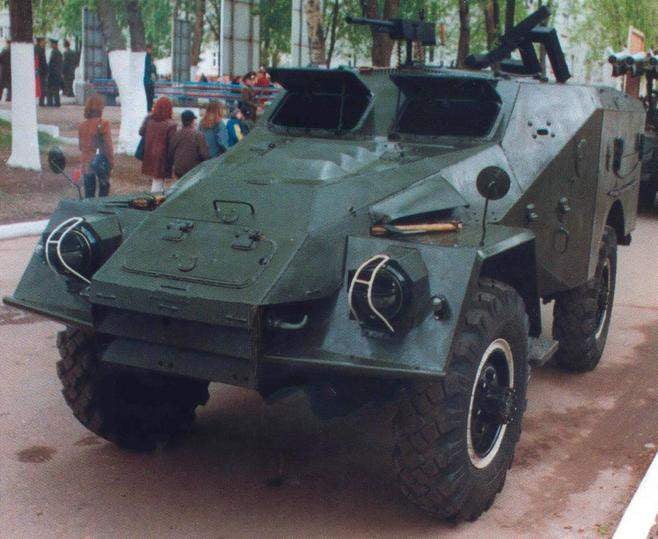 As you know, during the Second world war armored vehicles in the USSR were made. In this respect the Red Army considerably inferior to the Wehrmacht. To some extent the problem could smooth out the supply of British and American armored vehicles under lend-lease, however, to fully equip at least mechanized infantry battalions of tank and mechanized brigades it was not enough. The main means of transportation of infantry in the red Army until the end of the war remained cars and tanks.
As you know, during the Second world war armored vehicles in the USSR were made. In this respect the Red Army considerably inferior to the Wehrmacht. To some extent the problem could smooth out the supply of British and American armored vehicles under lend-lease, however, to fully equip at least mechanized infantry battalions of tank and mechanized brigades it was not enough. The main means of transportation of infantry in the red Army until the end of the war remained cars and tanks. The program of building the Soviet Armed Forces in the post-war period included the creation of several types of armored vehicles, both tracked and wheeled. As a prototype for a light wheeled armored personnel carrier was taken the American model Scout Car M3A1. This all-wheel drive armored vehicle was supplied to the USSR under lend-lease, and was considered perhaps the most popular among the soldiers and commanders of the red Army. M3A1 widely used as staff vehicles for reconnaissance, communications and support. All the prerequisites to create a domestic version of such a machine was already — since 1944 he tested a new all-wheel drive truck GAZ-63. A characteristic feature of the latter was the wide tires of 9.75-18 and a single rear wheel that had the same track as the front. When driving on dirt, snow, sand all the wheels were “in the tracks” without the additional rolling resistance due to the difference of the track width. On state tests of four wheel drive vehicles GAZ-63 demonstrated, as noted in the Chief automotive Directorate of the red Army, “record of obstruction”.
In early 1947, the design Bureau of the Gorky automobile plant headed by V. A. Dedkov, began designing light biaxial armored “object 141”, designed to carry eight infantry, a sort of “scout” Soviet-style. The leading designer was appointed V. K. Rubtsov. This car used the chassis of the GAZ-63, reducing the base on 600 mm and increasing the engine power by 10 HP prototypes of armored vehicles, which participated designers Koshkin L. V., P. I. muzukin and others, was manufactured in late 1947. The prototype of the first variant had a bearing armored corps, skryvavsheysya top tent. The second option differed from the first dual installation of the CFW and SGM machine guns of 14.5 mm and 7.62 mm, respectively, mounted on a pedestal and allowed to fire both ground and air targets. The housing design of both versions was the same. The Board had large inclination angles, and at the bottom opposite corners, as the German armored vehicles. In the future this arrangement of the plates refused, using hulls with vertical sides, is more capacious and easy to manufacture, although less bullet-proof.
Smaller than a truck, the size of the engine compartment caused the designers a different positioning assemblies of the engine. With a nearly equal axle loads, front and rear spring has done the same, equip them the first four, and then eight hydraulic shock absorbers. All machines equipped with winches.

